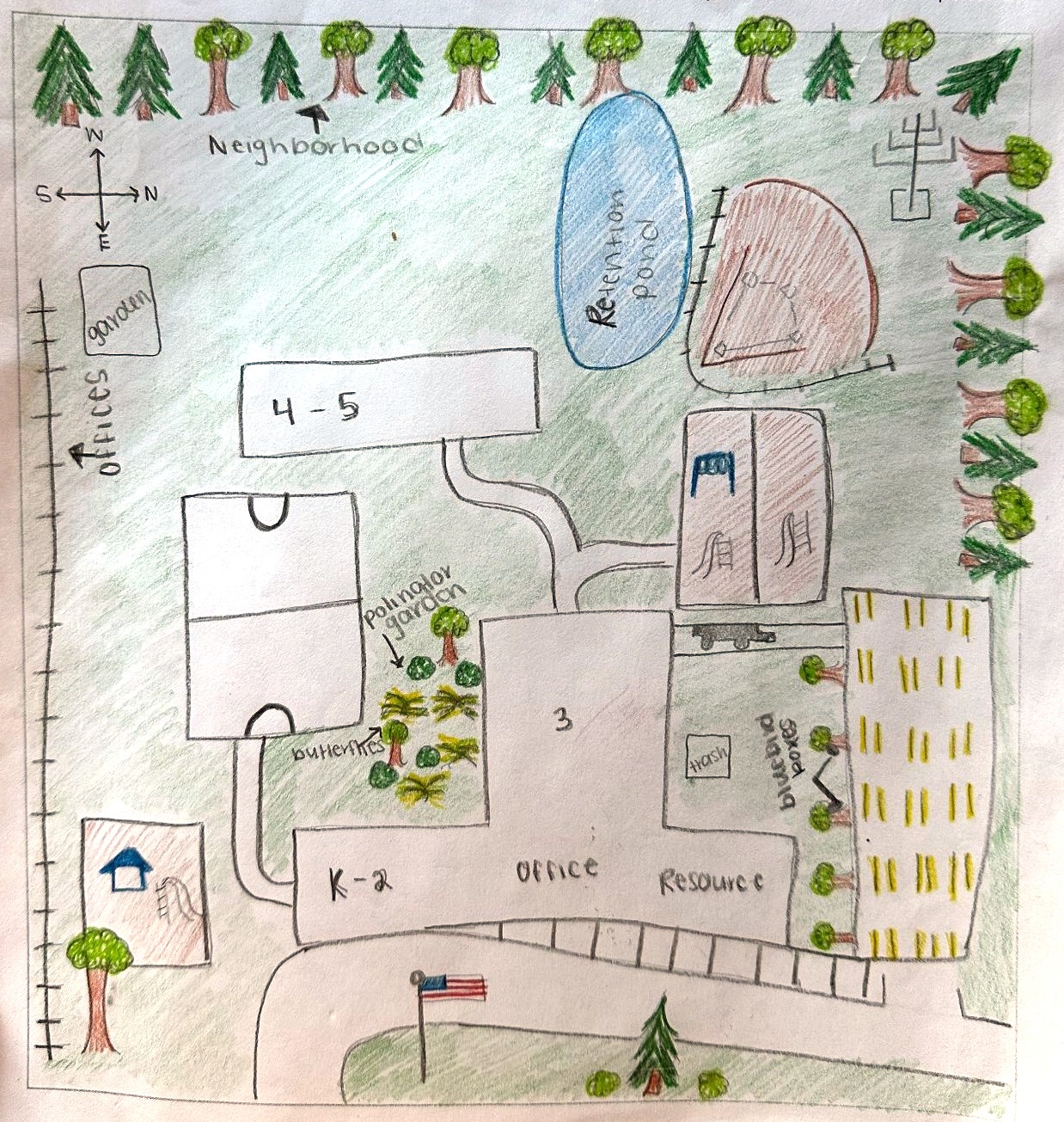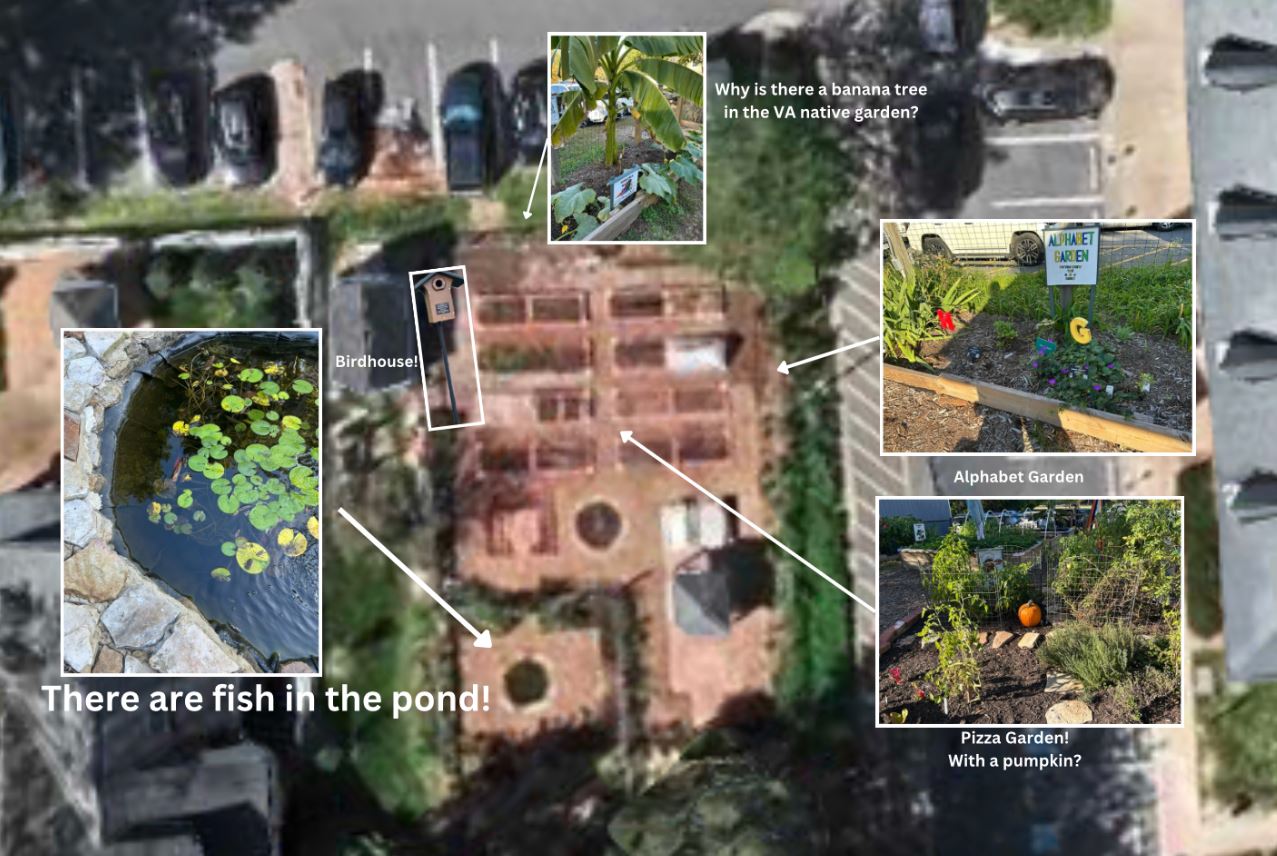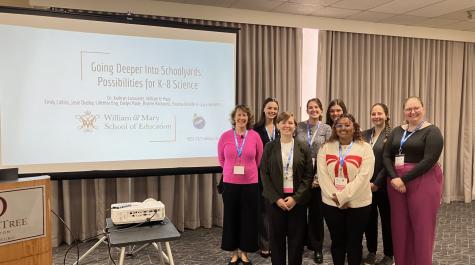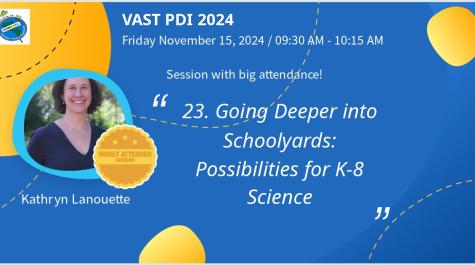Student teachers share innovative environmental science tools at 2024 VAST Conference
Last fall, seven master’s-level student teachers in the William & Mary (W&M) School of Education presented their research at the Virginia Association of Science Teachers (VAST) Professional Development Institute. The annual conference brings together science educators from across the Commonwealth to explore new approaches to teaching and learning. In a highly attended session, the W&M students shared their experiences creating multilayered maps to teach science in locally relevant ways.
The student presenters — Emily Collins M.A.Ed. ’25; Josie Dudley ’24, M.A.Ed. ’25; Lillemor Eng M.A.Ed. ’25; Evelyn Poole ’24, M.A.Ed. ’25; Brynne Rockovits M.A.Ed. ’25; Paulina Roselle M.A.Ed. ’25; and Grace Williams M.A.Ed. ’25 — led a session titled “Going Deeper Into Schoolyards: Possibilities for K-8 Science.” Under the guidance of Assistant Professor of Education Kathryn Lanouette, the group shared how they incorporated ecological, ethical and political dimensions of their schoolyards into instruction aligned with Virginia’s Science Standards of Learning (SOL).
Mapping the Science of Place
The students’ presentation highlighted their use of hand-drawn and digital maps to analyze the schoolyard environments of their student teaching placements. These maps revealed multiple layers of information — from the geological and ecological characteristics of the land to its historical and social contexts.
“We built off the Learning in Places framework,” said Lanouette. “We had been learning about the schoolyards and neighborhoods where we teach and really trying to go deeper into the ecological, ethical and political levels that are just inherent to schoolyard spaces,” Lanouette said. “One of the ways they gained knowledge of their schoolyards was by walking through them and creating these really awesome hand-drawn maps of what they were noticing and learning.”
One of the student presenters, Brynne Rockovits M.A.Ed. ’25, reflected on her experience analyzing Waller Mill Elementary School in the York County School Division, where she teaches first grade. Her hand-drawn, bird’s-eye view map of the school and surrounding schoolyard illustrated both the plant and animal layer — including bluebird boxes used for conservation projects — and the geopolitical layer, as the school serves members of the Camp Peary military population.
“I was surprised by how many layers could be represented in such a small area,” said Rockovits. “Each layer also provides me as a teacher with a lot of information about the physical land we learn on, and the broader physical and social climates around it.”
Using sources such as iNaturalist, the U.S. Geological Survey and more, the students also compiled digital maps of different timescales shaping their schoolyards, such as plant and animal communities, geologic layers, Indigenous lands and temperature maps. They added these findings to a multi-year resource table that Education students have been building over many years about the areas specific to where they are teaching.
The schoolyard mapping project simultaneously supports teaching numerous Virginia science and social studies SOLs, which vary by grade level. Some applicable examples include: demonstrating an understanding that interrelationships exist in populations, communities and ecosystems; using basic map skills to support an understanding of Virginia history and creating diagrams to determine characteristics of places or events; and, developing a geographic understanding by examining how Virginia’s location determines its climate and results in four distinct seasons, as well as how landforms influence settlement patterns.

Connecting with Virginia Science Educators
The VAST conference gave the W&M students an opportunity to engage with seasoned educators and fellow graduate students across the Commonwealth. In addition to presenting their research, they attended sessions on science education best practices, instructional strategies and emerging trends in STEM teaching.
During their presentation, the students fielded questions from attendees. Rockovits recalled that one educator asked how the mapping process influenced their lesson planning.
“Being able to see the physical and historical layers of the schoolyard gave me a new perspective on how to incorporate real-world, place-based examples into my science instruction,” she said. “It’s made me more intentional about connecting our lessons to the land and the communities around us.”
Private Support for Future Teachers
The students’ participation in the VAST conference was made possible through the generosity of private donors. The Future Teachers Fund, which supports students in the School of Education’s Curriculum & Instruction program, covered the cost of attendance for each presenter.
“We’re so grateful for the private funding that enabled these students to share their research with the broader education community,” Lanouette said. “Their work demonstrates how deeply place-based science can enrich elementary and secondary education and inspire meaningful connections to students’ environments.”
For the students, the conference was a rewarding milestone in their teacher preparation journey.
“Attending VAST was a great way to meet other science educators and be involved in educational research at the graduate level,” Rockovits said. “It was inspiring to see how educators across the state are bringing creativity and innovation into science instruction.”

